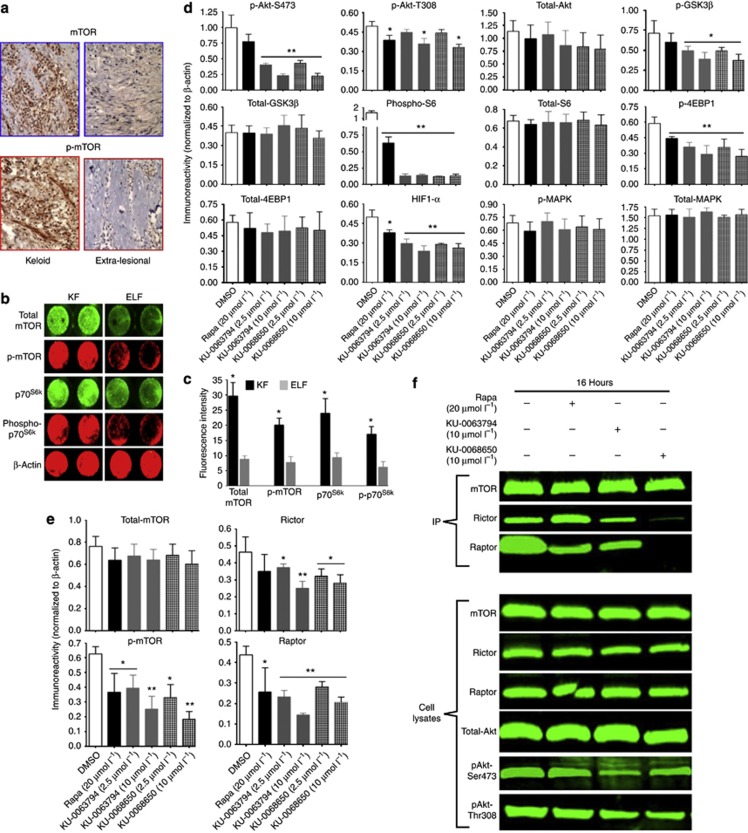Figure 1.
Inhibition of intracellular signaling in keloid fibroblast (KF) by both KU-0063794 and KU-0068650. (a) Differential expression of mammalian target of rapamycin (mTOR) and phosphor-mTOR (p-mTOR) (n=6). (b) Differential expression of mTOR signaling in KFs and extra-lesional fibroblasts (ELFs) using In-Cell Western Blotting (ICWB) (n=11). (c) ICWB average immunoreactivity from (b). (d) ICWB average immunoreactivity of KF (n=11) induced mTOR inhibitors, normalized to β-actin. (e) Both KU-0063794 and KU-0068650 inhibit mTORC1 and mTORC2 in primary KFs. Bar graphs represent the quantification of average protein expression in different treatments from three independent ICWB experiments (n=6). (f) Co-immunoprecipitation for mTOR with raptor and Rictor to assess TORC1 and TORC2 complex inhibition by both the compounds (n=11). The data presented here are the means±SEM of triplicate experiments performed. **P<0.05, *P⩽0.01 indicate significant difference in the treated group compared with the DMSO control group. AKT, also known as protein kinase B (PKB); 4E-BP1, eukaryotic initiation factor 4 E-binding protein-1; GSK3β, glycogen synthase kinase-3; HIF-1α, hypoxia-inducible factor-1alpha; IP, immunoprecipitation; MAPK, mitogen-activated protein kinase; p-MAPK, phosphorylated mitogen-activated protein kinase; Raptor, regulatory associated protein of mTOR; Rictor, rapamycin-insensitive companion of mTOR.

